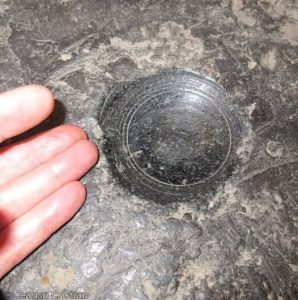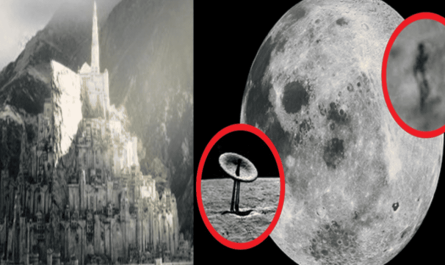Within the hallowed halls of the Cairo Museum resides an unassuming artifact that poses profound questions about the ingenuity and technological prowess of ancient civilizations. This is not a towering statue or a gilded sarcophagus, but a remarkable carving in solid granite, a stone renowned for its formidable hardness. What makes this piece so captivating are the near-perfect concentric circles etched into its surface with a level of precision that continues to baffle researchers today.

Granite, an igneous rock composed primarily of quartz, feldspar, and mica, is notoriously difficult to work with. Even with modern, hardened steel tools and advanced machinery, shaping granite requires significant time, effort, and expertise. This reality underscores the perplexing nature of the concentric circles found on this ancient artifact. How could artisans from millennia ago, potentially armed with what we believe were relatively simple copper tools and rudimentary abrasives, achieve such accuracy and symmetry?
This very question has ignited a vigorous debate among archaeologists, engineers, and stoneworking specialists. The precision of the grooves is so striking that it stretches the limits of what seems possible with the tools and techniques traditionally attributed to the ancient Egyptians of that era.
The Conventional View: Mastery of Known Techniques?
One line of thought posits that the ancient Egyptians, masters of stoneworking in their own right, possessed a deep understanding of materials science and highly refined techniques that allowed them to achieve such feats. Perhaps they employed specialized abrasives, used water or other fluids as cutting aids, or developed sophisticated methods of applying consistent pressure over extended periods. While copper tools are softer than granite, their effectiveness could be enhanced through alloying with other metals (though evidence of such advanced alloys at this early stage is debated) and through relentless, patient work. Could the creation of these concentric circles simply be a testament to an extraordinary level of skill and dedication, honed over generations?
The Intriguing Possibility: Evidence of Lost or Unknown Technology?
The alternative, and perhaps more tantalizing, perspective suggests that the precision of the carving hints at the possibility of lost or as-yet-undiscovered ancient technologies. Could the ancient Egyptians have possessed tools or techniques that were more advanced than what we currently attribute to them? This idea often ventures into discussions of ultrasonic machining, advanced drilling techniques, or even the potential for collaboration with other, unknown civilizations. While such theories often lack direct archaeological evidence, the sheer anomaly of the artifact keeps the door open to these possibilities.
The concentric circles in the granite defy easy explanation. They challenge our linear understanding of technological development, forcing us to confront the limitations of our current knowledge about ancient capabilities. Were the ancient Egyptians capable of feats of engineering and artistry that we are only beginning to comprehend? Or does this enigmatic carving point to a more complex history of technological innovation than we currently acknowledge?
Displayed in the Cairo Museum, this piece of carved granite serves as a potent reminder that the past still holds many secrets. It stands as a testament to either the remarkable potential of human skill and perseverance or the tantalizing prospect of lost knowledge. Whatever the true explanation, the enigma of the concentric circles in granite continues to spark curiosity and fuel the ongoing quest to understand the full scope of ancient human ingenuity. It is a silent challenge etched in stone, urging us to look deeper and question the boundaries of what we think we know about the civilizations that came before us.


